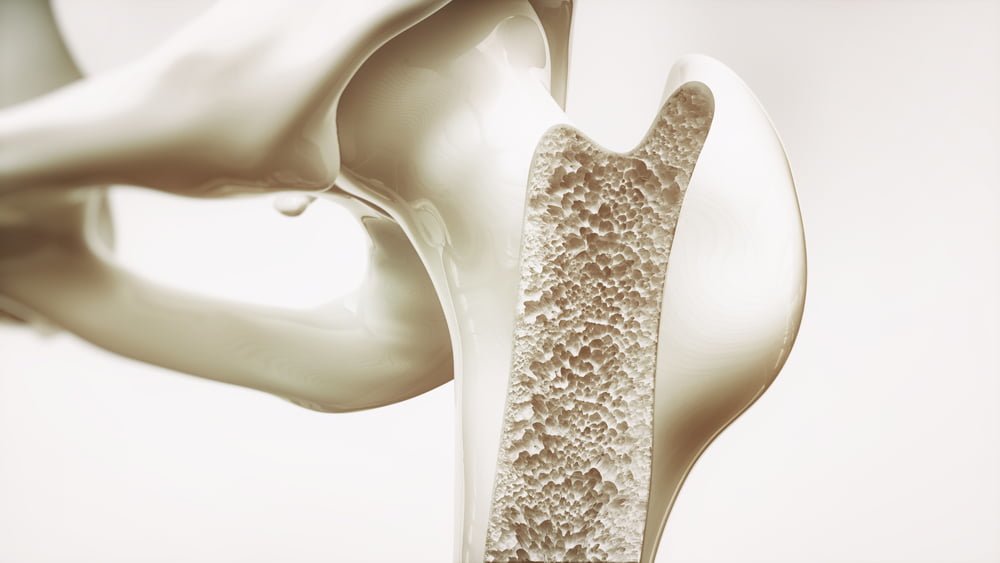Osteoporosis was the first
genuine long-term major disease proven to be related to menopause. Hip and
spine fractures are a major cause of earlier death or painful disability for
older women. I present below a logical and common sense approach to reducing
this epidemic.
Because fractures can occur
suddenly and without warning, the golden rule is that every woman after
menopause should be evaluated for risk factors for osteoporosis. This will
include a comprehensive medical history, including use of contemporary
questionnaires that help measure the level of risk of a fracture in the future.
A physical examination is
essential, and some special tests will be necessary.
A bone mineral density test (BMD)
should be done:
· In all women older than 65
· In postmenopausal women regardless
of age if other risk factors or predisposing diseases are present
· In women over 50 if they have risk
factors
· All postmenopausal women who have
suffered a fragility fracture (essentially any fracture that occurs from a
standing height)
There are a number of other
laboratory tests that may be needed to identify secondary causes unrelated to
menopause. Women can also go directly to the FRAX website and determine their own
level of risk, but it is preferable if a clinician enters the details including
the bone density result (www.shef.ac.uk/FRAX).
Risk reduction measures
include healthy diet, exercise, no smoking, and appropriate intake of calcium
and vitamin D. In truth, a healthy lifestyle that pays attention to these
activities may be all that is necessary for women after menopause who are at
low risk for fracture.
Calcium
and vitamin D on their own will probably not reduce the risk of fracture.
Nonetheless, calcium supplements are recommended for those unable to consume
sufficient dietary calcium; most women will need an additional 600 to 900
mg/day over their usual daily intake to reach recommended levels. Calcium
supplements are available in a variety of different calcium salts, such as
calcium carbonate or calcium citrate. Calcium citrate supplements are well
absorbed when taken with meals or on an empty stomach; calcium carbonate is
better absorbed when taken with food. In all cases, it is best to take calcium
in divided doses for better absorption.
Vitamin
D is actually a steroid prohormone rather than a vitamin, as it can be produced
in the human body through the interaction of sunlight with the skin.
Nevertheless, this nutrient is commonly characterized as a vitamin. Dietary sources of
vitamin D are limited to fortified dairy products and fatty fish. Therefore, the use
of a supplement
containing
vitamin D is the most practical means of addressing vitamin D sufficiency.
Once the risk becomes greater,
we are fortunate that a large number of effective therapies have been developed
over the last 20 years, and we actually have quite a body of information about
them.
Anti-osteoporosis drugs are
strongly recommended for the following women:
· Any previous vertebral or hip
osteoporotic fracture
· Low BMD values diagnostic for
osteoporosis
· FRAX and moderately low BMD scores
indicating that the chance over the next 10 years of sustaining a hip fracture
is greater than 3%, or for any other major osteoporotic fracture (spine, wrist,
shoulder) is greater than 20%
PHARMACOLOGIC AGENTS (DRUGS)
The medications that work for
bone fall into two categories, those that prevent further bone loss (antiresorptive agents), and those that actually build new bone
(anabolic agents). The clinical
challenge is in selecting the correct and most appropriate drug for each
individual woman based on her personal profile.
1. ANTIRESORPTIVE AGENTS:
These are the drugs that
prevent the reabsorption of bone, hence slow bone loss.
ESTROGENS: Surprisingly, the
only drugs that have been proven to be effective in reducing the risk of
osteoporosis and osteoporosis-related fractures in women without preexisting
bone loss are the estrogens. All other drugs have only been tested in
populations that are already osteoporotic. A disadvantage of estrogens is that
when their use is discontinued, the bone reverts to its previous pattern of
bone loss. Thus the protective effect of estrogen while on therapy dissipates
within a year or two of stopping.
BISPHOSPHONATES: The first
group of drugs developed specifically to slow bone loss and reduce the risk of
fractures are the bisphosphonates. They have been proven to increase bone at
the spine and the hip, and to reduce the risk of vertebral fractures by 40%-70%
and nonvertebral fractures, including hip, by about 35%. The different
bisphosphonates (including alendronate,
ibandronate, risedronate, zoledronic acid, and etidronate) are available as oral tablets, with dosing ranging from
daily to weekly to monthly. There are injectable forms for monthly, 3-monthly
and annual injection. At first considered extremely safe, bisphosphonates have
now been shown to carry potential risks, rare except the bowel problems, but
including osteonecrosis of the jaw, and unusual spontaneous fractures of the
femur. One good property of bisphosphonates is that they produce a long-lasting
effect. So even if stopped after 5 years of use, their beneficial effect seems
to remain for several more years.
ESTROGEN AGONISTS/ANTAGONISTS (SERMS): A group of drugs that works by sometimes activating the estrogen
receptors and sometimes by blocking them was developed to try and enhance the
benefits and reduce the risks of estrogen. So far only one is approved for
prevention and treatment of osteoporosis. Raloxifene
(Evista) is not quite as effective on the bone as estrogen, but carries the
benefit of reducing the risk of breast cancer after menopause in women with
osteoporosis.
CALCITONIN: This drug is
available as a nasal spray or a subcutaneous injection. Although approved by
the FDA for treatment of osteoporosis, its effect is quite weak, and it is not
widely used in the USA.
DENOSUMAB: The newest family
of drugs to be approved by the FDA is called the rank ligand inhibitors (RANKL). It blocks the activity of the bone
resorbing cells, and adds a little more bone than do the bisphosphonates. The largest study showed that denosumab (Prolia) reduced spine
fractures by nearly 70% and hip fractures by 40%. As a new drug, long-term
effects are still being studied.
TIBOLONE: This interesting
steroidal drug demonstrates estrogen, progestogen, and androgen-like effects.
In the largest study it reduced the risk of all fractures, and possibly both
colon and breast cancer. Like estrogen, it increases the risk of stroke and
blood clots. The FDA has not approved Tibolone;
hence it is not available in the United States.
2. ANABOLIC AGENTS
Unfortunately this list is
short. These are the drugs we really need to build significant amounts of new
bone to replace what has been lost in osteoporotic women.
PARATHYROID HORMONE (PTH):
This is actually a natural hormone produced by small glands adjacent to the
thyroid gland. The FDA has approved PTH, called teriparatide (Forteo), for the treatment of
individuals with osteoporosis who are at high risk of fractures. It is given as
a daily injection under the skin with a tiny needle.
SO HERE ARE MY RECOMMENDATIONS
If you listen to the debate
among the experts, you cannot but be surprised by the almost religious fervor
they bring to their choice of drug. The truth is that one size does not fit all
and, like fashion, the time occasionally comes to swap one for another.
There is in fact a very
logical approach to using drugs to reduce the risk for fractures, assuming of
course that there is a justifiable reason for prescribing a pharmacologic agent
in the first place, and that an individual’s risks and benefits have been taken
into account.
For the first 5 to 10 years
after menopause, the best and most logical selection to safeguard bone is HT.
After that, again depending upon individual circumstances, the hormones can be
continued or discontinued. If the latter, and risk of fracture remains high,
then one of the other antiresorptive drugs can be started. If a bisphosphonate
is selected, it should be stopped after 5 years, and the bone density followed.
Further drug therapy may be unnecessary.
Someone with severe
osteoporosis and high risk of fracture is a candidate for PTH.
Everyone should follow the
general principles of healthy living, and take calcium and vitamin D
supplements as indicated. The important message is that we can identify increased
risk for fractures, and adherence to an appropriate health and drug regimen can
significantly reduce that risk.
Spread the word, we are responsible for doing the
best we can.
Wulf Utian MD PhD DSc
Author; CHANGE YOUR
MENOPAUSE – Why one size does not fit
all. http://www.amazon.com/Change-Your-Menopause-size-does/dp/0982845723/
Click here for a limited offer for a free newsletter


















